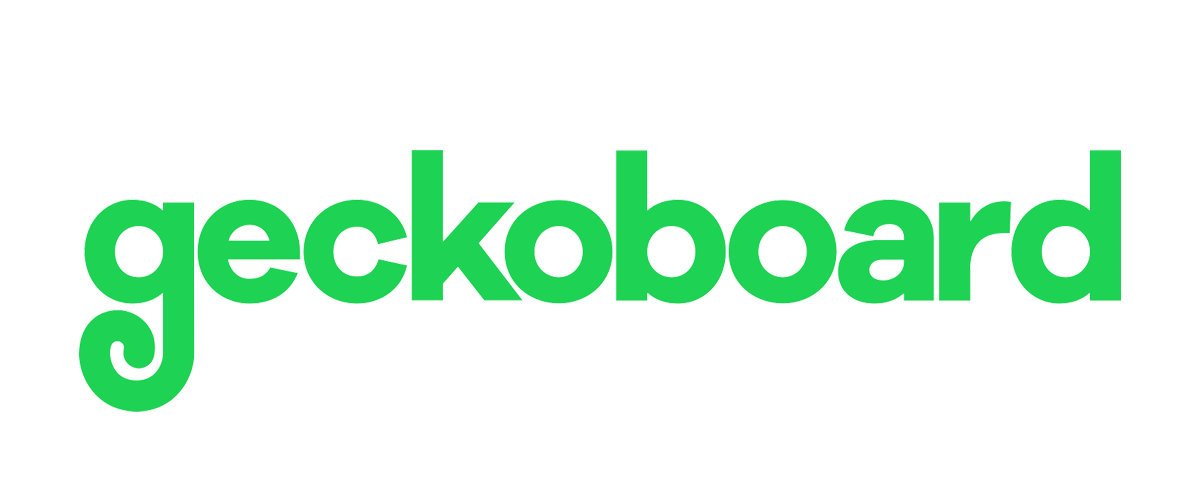
Geckoboard Case Study
Creating team focus and coaching senior leaders
The challenge
Geckoboard's high-quality SaaS dashboard product was earning solid subscription revenue, but not increasing at the rate needed to meet the ambitious growth targets founder Paul Joyce had set. Worse, the development team was leaderless and lacked focus, communications and trust between the engineers and the rest of the company were poor and getting poorer, and progress on key revenue-driving projects was nowhere to be seen. Paul and I agreed a Transformation project, with my operational involvement for several days each week, would be a good way to achieve the turnaround that Geckoboard needed.
Driving change
On my first day, I noted that a team of eight engineers was holding four standups and working on at least the same number of disparate projects. By my second day, we had a single standup; by the end of the first week, we had appointed a tech lead; by week two, I had helped Paul to develop a clear company focus statement; and by week three, we had aligned the entire development team to work on a single revenue-enhancing project—integrating with online spreadsheets like Google Sheets. The new focus quickly bore fruit, with daily releases and user tests giving us valuable and largely positive feedback about the utility and usability of the new features.
Solidifying improvements
With the development work much better aligned to company goals and the team working productively, I turned to medium-term improvements to help make these improvements long-lasting. First, I trained the entire company in the principles and practises of Action Science, which substantially improved everyone's ability to confront difficult issues and jointly design solutions. Next, we began using the elephant carpaccio technique to provide value every day from releases to the live site, react faster to feedback, and provide "sanity checked" target dates for marketing and sales. Then we identified a set of metrics that we expected to improve with successive milestones in the spreadsheets project, and instituted a weekly review of progress toward these goals. Finally, I worked with the new team lead, who had never managed before, to take on new challenges like correcting negative behaviour, holding one-on-ones, and completing annual reviews.
Scaling the team
As all this was going on, Geckoboard was intensively recruiting for a variety of technical roles. I sourced, filtered, interviewed, and helped decide on several of these hires. We were most successful in finding QA and back-end developer candidates, with four solid hires in six months. We were much less successful in finding front-end developers, with Geckoboard's high standards and cutting-edge technology severely (but correctly) limiting the pool of candidates. We even tried converting our existing back-end developers to front-ends, with zero success. I was unable to suggest sufficiently high-volume sources for efficient hiring of these skills and stepped back from driving this activity.
As the spreadsheets project reached maturity, we identified a new revenue-driving improvement to make—a re-imagined integration with Salesforce. We split the developers into two feature teams, with one continuing on final improvements and polish for spreadsheets with the first tech lead, and the other taking on the new integration under the leadership of an inexperienced but very capable developer. She led the team to build and release a version of the new Salesforce tools in just three weeks, with enthusiastic user feedback. We experimented with ways to keep the two teams communicating well and I continued coaching both managers.
Independence
In the final phase of the project, I significantly reduced my involvement, switching to Squirrel-as-a-Service and continuing to function as a coach and advisor. Paul and I agreed this would be a good way to ensure the engineering team was ready to function and grow independently.
The Salesforce lead decided management wasn't for her at this time, but one of the new hires had sufficient seniority and interest to take on this challenge from her, with my guidance in the new role. We identified some long-running conflicts and challenges in the business and used Action Science methods - now firmly embedded in the company consciousness and culture—to experiment with solutions, with varying degrees of success. The engineers developed and adopted new QA initiatives with noticeable improvements in developer efficiency as a result, and minimal oversight from me. And both feature teams took on new, challenging projects, carrying out design, prototyping, and build activities on their own with positive results for customers.
Conclusions
After just over a year of involvement, Geckoboard was ready to continue on its own, with solid leadership in place, new and evolving processes providing value, and a clear direction to profitability. In reflecting on the engagement, Paul said, When Squirrel began working with us, the engineering team was full of talented and committed developers who lacked leadership and confidence. He helped to transform them into an energised, highly-focused team who now deliver high-quality product better and faster than I could have imagined.


